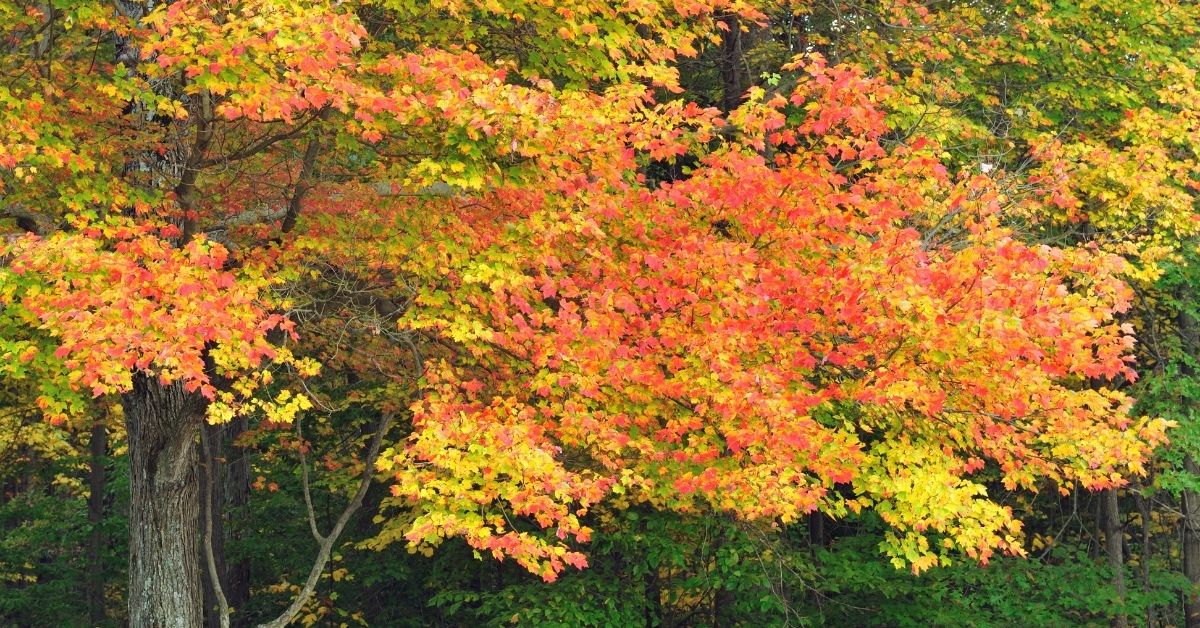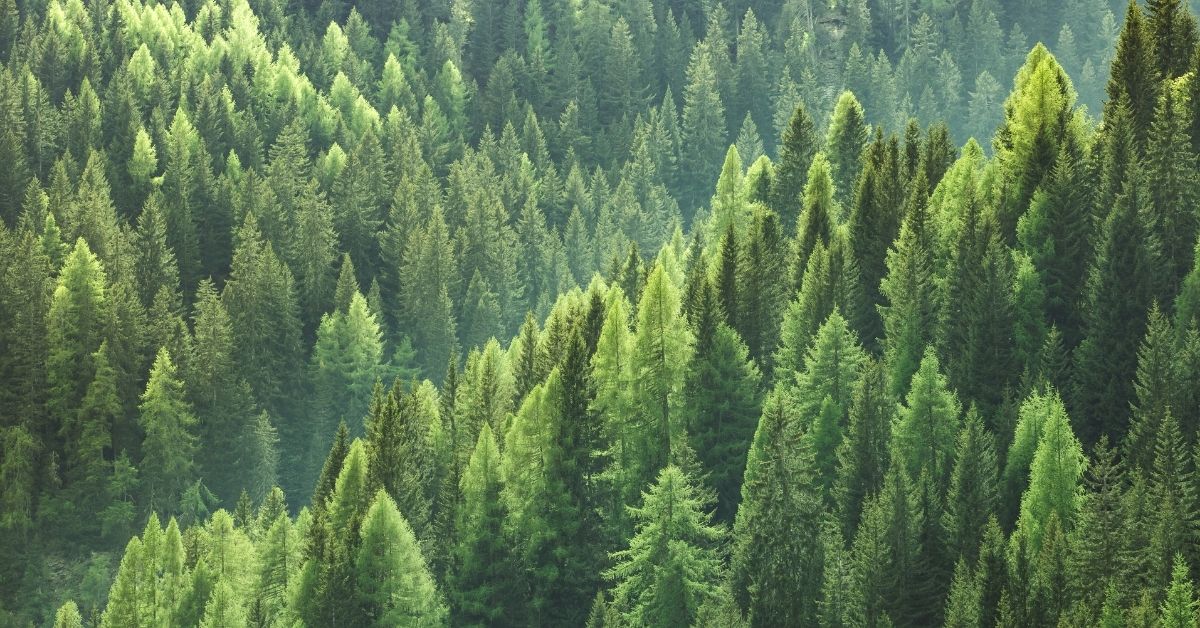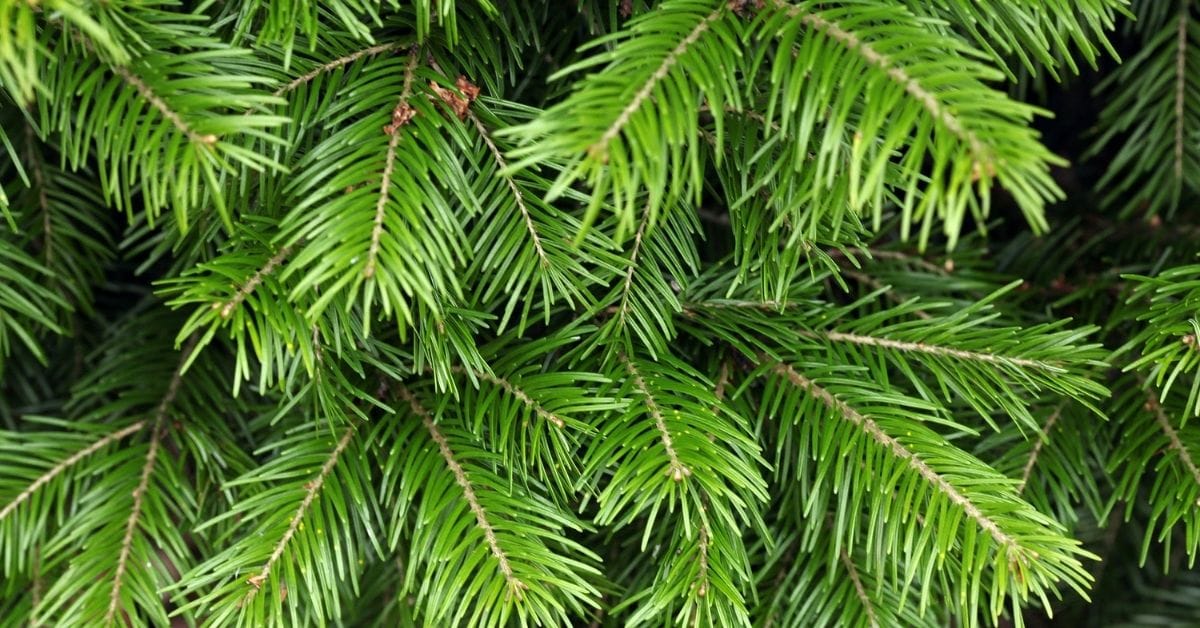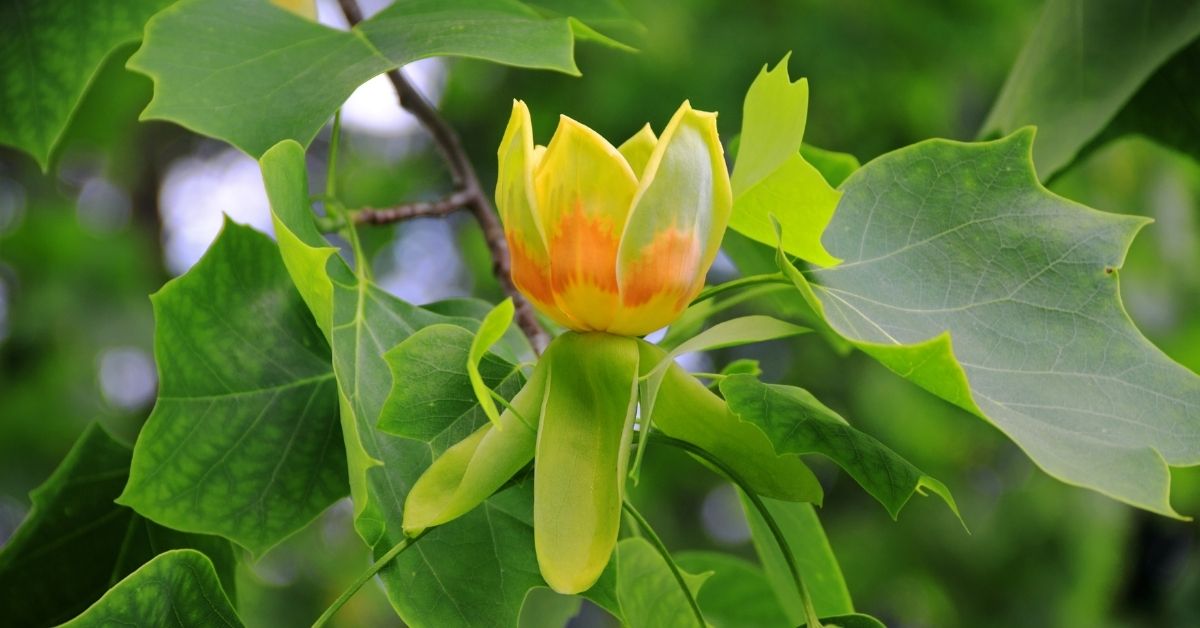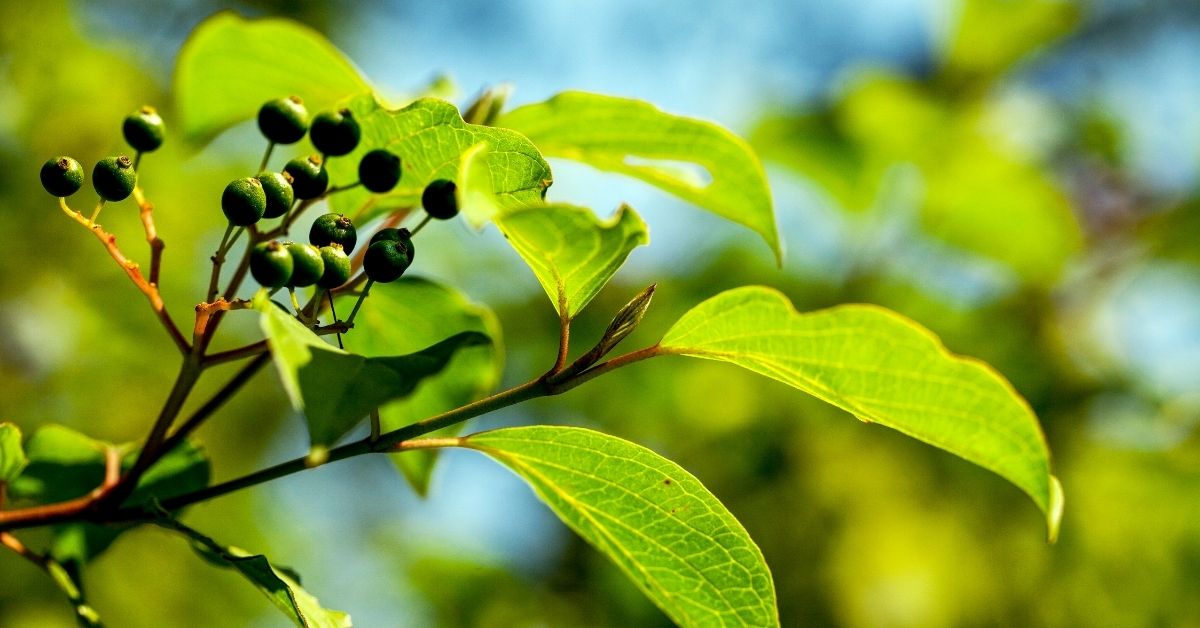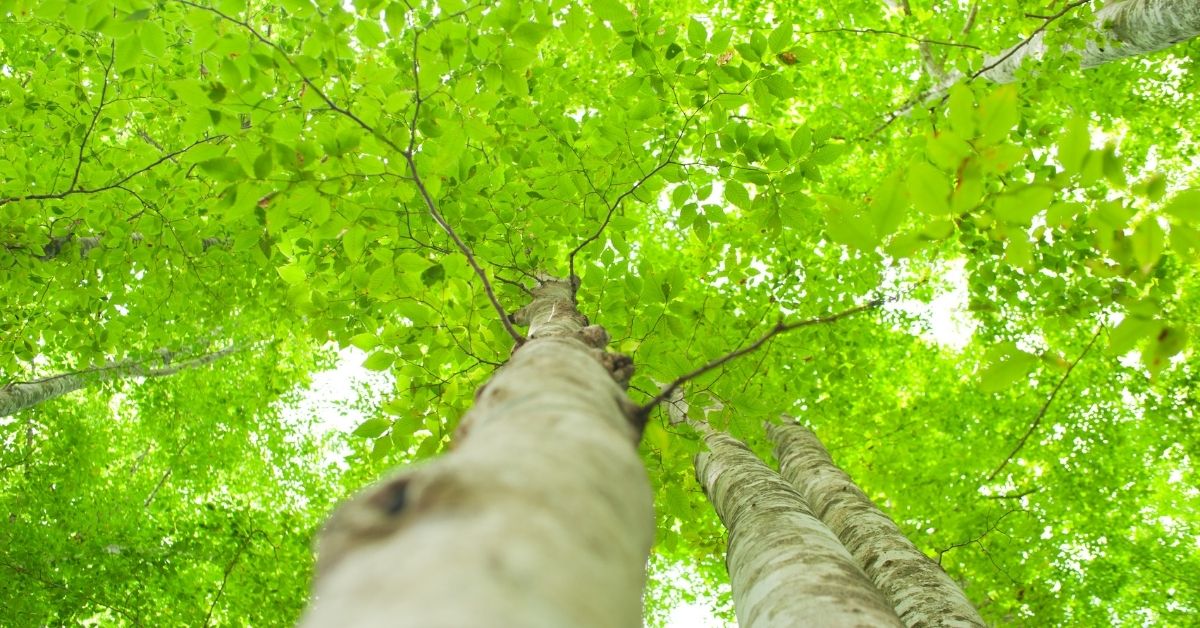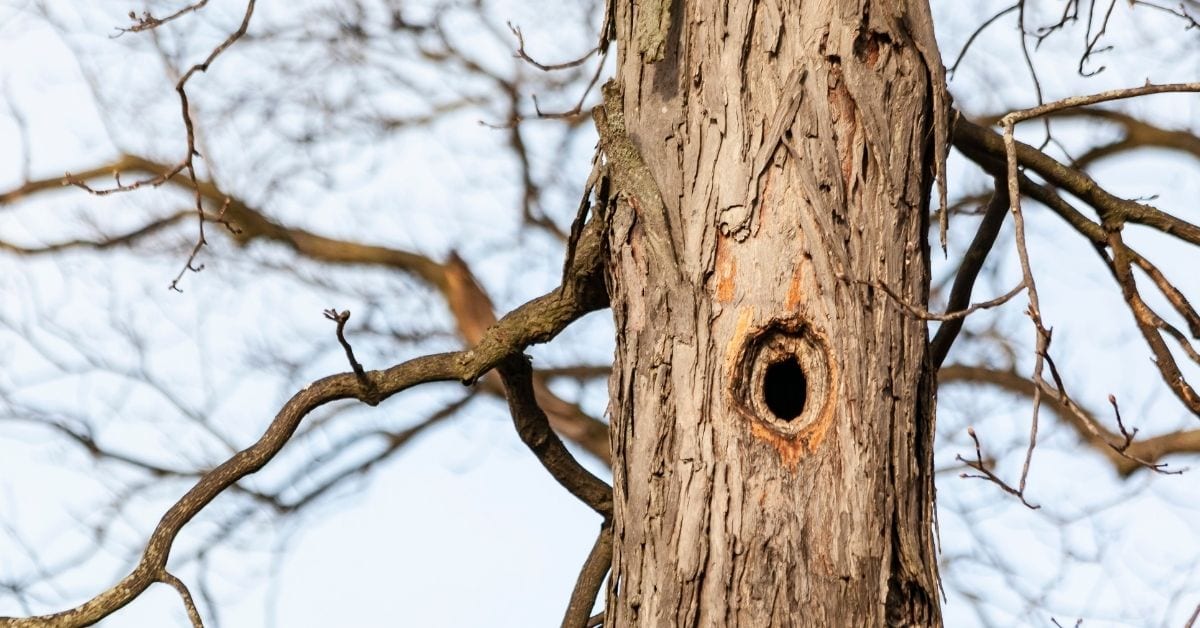Trees are almost universal on our planet, growing practically everywhere that isn’t too dry or too cold.
Most of us see tree species every day and that’s great news because they play a vital role in our lives.
Trees supply us with oxygen and our survival depends on vegetation. This means they are essential.
Not only they are important, but they also look beautiful.
Whether you’re a hiker, an outdoor enthusiast or a traveler, you probably wondered what type of trees were standing in front of you at some point.
In this post, we’ll cover the most common types of trees and we’ll help you identify them.

How Many Types of Trees Are There?
The world is home to over 60,000 known tree types.
While we don’t know how many different types of trees exist beyond the areas we’ve checked, there could plausibly be anywhere from hundreds to thousands more species somewhere out in the world.
Many trees call Brazil (i.e., the Amazon Rainforest) home, with that particular nation hosting over 8500 varieties.
Moreover, you can find different kinds of trees worldwide, with many isolated to specific areas rather than spreading across a continent.
Most common trees have one of two advantages. First, they may be a primary component of a large forest somewhere.
Old-growth forests typically feature trees that have evolved to that environment and share characteristics.
Other common trees have qualities that make them appealing for intentionally growing and planting.
This includes fruit trees, shade trees, soil-retaining trees, and anything else that could make any tree appealing to humanity.
The Most Common Trees
Here are fifteen of the most popular types of trees worldwide, including information about their habitats and what makes them stand out.
For this guide, we’ll be grouping similar tree types together.
1. Maple
Easily one of the most popular tree types worldwide, the maple grows in the United States, the lower areas of Canada, and large parts of Europe and eastern Asia.
Most grow to a height of somewhere between 33 and 148 feet, but some varieties can be as small as shrubs.
These trees have a noticeable opposite leaf arrangement, with most species having palmate veins.
Maple trees are typically deciduous, but a few particularly southern varieties are evergreens instead.
Maple trees stand out as being almost aggressively useful for commercial purposes, which is one reason why they’re grown in so many areas.
Even without financial value, their bright autumn colors make them a popular choice for decorating others.
Arguably the most famous product from these trees is maple syrup, which comes specifically from the sugar maple.
Other varieties of maple can also produce syrup but generally don’t have enough sugar in them to make them commercially viable.
It takes about 2-3 trees to produce one gallon of syrup per year.
That may sound like a lot, but over sufficiently large areas, you can have tens of thousands of trees.
Maple trees also produce dried wood for smoking food, charcoal for producing Tennessee whiskey, and tonewood for musical instruments.
Maple is considered to have a bright and hard sound, which makes it a good choice for electric guitars and many calmer instruments like violins and cellos.
Finally, maple timber is hard and a common choice for arrows, bowling pins, decorative furniture, and more.
In short, between its aesthetic appeal and commercial usefulness, it’s no surprise that you can find maples all over the climates where growing them is the easiest.
2. Pine
If maples are iconic for plants whose leaves (usually) fall off, then pines are perhaps the most famous evergreen.
Growing across much of North America as well as northern Europe and areas in north and east Asia, Pine trees may also be the single most popular tree in the world.
Most pine trees have narrow needle leaves, standing apart from the broader leaves that many other trees prefer using.
Needles can persist for as long as 40 years, depending on the species, which is quite efficient when you realize how little it takes to grow them.
Incidentally, while pine trees are evergreens, they tend to shed large numbers of leaves annually to help keep other plants away from their base.
One characteristic that stands out for pine trees is their extremely impressive tolerance for temperature variations.
Pine trees usually grow in cold mountain areas where no other trees can survive, but some species can also grow in hot regions and tropical climates.
They’re hardy enough that they’re considered invasive in some areas, too, mainly because their acidic needles can cause problems for other plants.
Pine trees typically produce cones for reproduction, which fall off trees and may be carried to other places by animals.
Some parts of the cone are edible by humans, but otherwise, the cones may wait for many years until an environmental cue like a fire opens them and helps new pine trees settle in to grow.
Although not quite as commercially viable as maple, pine trees are still one of the most commonly harvested softwood trees in the world and a type of tree you’ve probably seen many times before.
Pinewood is a common choice for carpentry, including commercial areas like furniture and flooring, and its resin helps create turpentine.
Some pine trees produce large seeds known as pine nuts. These are popular ingredients in both cooking and baking, as well as producing pesto sauce.
Some people also make tea from pine needles or use the white inner bark as either a snack or a powder to add to other foods.
However, these uses are mostly small-scale compared to using pine’s timber.
3. Oak
Oak trees are technically part of the beech family, but they have some characteristics that ensure most people treat them as different tree types for most practical purposes.
They’re one of the most popular types of trees in the world, growing from cooler temperate regions to tropical areas in the Americas, as well as across Asia, Europe, and northern Africa.
Oak trees typically have spirally arranged leaves, with gentle curves on the outside.
While most are deciduous, a group known as live oaks is evergreen instead.
Oak trees also stand out for their frequent hybridization, which means populations change frequently.
Oak trees are pollinated by wind and have weak internal barriers against hybridization, so ecological stresses are particularly likely to push oak trees towards making hybrids in their seeds.
This produces various interesting effects, including clear distinctions in morphology and genetic data despite being fundamentally similar at their core.
Oak trees are moderately toxic, with both the leaves and the acorns being dangerous to humans and livestock.
Domestic pigs can eat oak acorns, though, which makes raising them in oak forests noticeably easier.
The main toxin in oak acorns and leaves is known as tannic acid; notably, it can be removed from acorns to make them safe for humans to eat.
Oakwood is relatively dense, with impressive strength and hardness for its size.
Throughout the ages, it’s been used for ocean-going ships, as well as timber-framed buildings and various types of furniture.
The wood is naturally resistant to both insects and fungi as long as it doesn’t get too wet.
Oakwood is also a popular material for aging alcoholic drinks, including wine, brandy, whiskey. American and French oaks are the most popular choices for this purpose, but some manufacturers look elsewhere.
The cork oak helps make cork wine stoppers, and oak wood chips are useful for smoking foods.
Together, all of these details make oak trees a popular and commercially viable tree, especially for creating durable or luxury goods.
4. Sycamore
Sycamore trees are a particular variety of maple, distinguished by the fact that leaves and branches alternate (whereas they grow opposite on typical maples).
Sycamore trees can exceed 100 feet tall, and bases have been recorded as wider than 13 feet.
Outside of their size and leaf patterns, sycamore trees are relatively easy to identify, thanks to the unusual characteristics of their bark.
Flakes of the bark peel off in mottled, irregular ways, leaving behind a tree with a patchwork of tan, white, green, and gray areas.
These aren’t to be confused with a fig-producing tree, also known as a sycamore, or the varieties also known as plane trees.
Sycamore maples are much more common in central and eastern Europe, as well as western Asia, where it displays both positive and negative qualities.
Sycamore trees produce large amounts of both pollen and nectar, which attracts insects to the area.
Further, the way their bark falls off makes it generally easier for insects to live near the wood, which is part of why this tree tends to support a variety of other creatures.
The leaves tend to have a large, domed crown with three main sections, as well as very short spikes at the end of each leaf.
Sycamore trees are relatively sturdy and adapt well to urban areas where local air pollution won’t kill them off too quickly.
They’re also quite resilient to wind, which makes planting them as windbreaks very common.
Sycamore wood is usually white or cream, slowly turning a more golden hue as it ages.
It’s non-staining, which makes it good in kitchen environments, and it’s hard and dense enough for making instruments, floors, and furniture.
Many people use it as a traditional wood for violins.
For less-enduring use, sycamore wood is viable for fireplaces. It’s relatively easy to saw down and split, and it also tends to produce a hot flame while it’s burning.
It’s not as good for syrup as sugar maple, but some people tap this tree to make similar products.
5. Magnolia
Magnolia trees are some of the oldest trees around, holding the distinction of being older than bees.
The current thought is that magnolias were originally pollinated by beetles, with the need to withstand their movement leading to the particularly tough areas of its flowers.
Magnolia trees are common in two parts of the world.
One growing area includes large parts of eastern and southeastern Asia, while other magnolias grow across the Americas and into the West Indies.
These trees are popular for their aesthetic qualities, with bowl-shaped or star-shaped flowers appearing in spring and fruits in autumn.
Magnolia flowers and leaves are a relatively common choice for culinary uses.
In western areas, the petals of one species are pickled and used as a condiment, while Asian cuisine may involve pickling buds and using them to flavor rice or tea.
Magnolia leaves are also helpful for culinary use, where people can use them as a seasoning powder, as a wrapping for cooking other foods or mixed into some soups.
Unlike some of the options above, however, Magnolia trees don’t have quite as many commercial uses beyond their culinary applications.
It does have some uses as timber (often under the name “Yellow Poplar”), where it sees use in veneer, plywood, upholstered furniture frames, and some interior trims.
The wood isn’t especially attractive or as durable as some other options, so prices are low compared to more popular wood choices.
Magnolia wood is generally susceptible to decay and insect attacks without as much resistance after it’s cut, so companies rarely rely on this for anything that needs to be unusually long-lasting.
It tends to do well in dry conditions, though, so indoor uses are more common.
6. Cedar
Cedar trees are cone-bearing trees native to the western Himalayas and the general Mediterranean region, growing between 30 and 60 meters tall.
Cedar trees have a distinctively spicy scent to the wood with very thick-ridged or square-cracked bark.
The needle leaves are relatively tense and range from bright to dark green, while the barrel-shaped cones disintegrate to release winged seeds into the air.
Cedar trees do well in mountainous climates, especially in areas further south than pine trees typically grow. They can survive in places as cold as -25 Celsius (or -30 for Turkish cedars).
Outside of its original habitat, cedar is being successfully cultivated in western Europe, southern Australia, and both the western and southern areas of North America.
Cedar trees are impressively helpful, starting with their status as ornamental trees.
However, cedarwood has an attractive golden color and often grows in relatively even segments each year, supported by a slightly sweet scent.
Cedarwood is particularly popular for creating storage chests for clothes and anything else made of wool.
This wood naturally repels moths and similar pests thanks to the qualities of cedarwood oil, which repels bugs at minimal risk to humans, pets, and the environment.
Cedar is also a popular choice for construction where the wood will be exposed, such as decks and fences, thanks to its natural beauty and resistance to moisture and decay.
Indoors, its deodorizing properties make it useful for things like shoe trees.
Cedar naming is a subject of some debate.
Some experts consider the Himalayan/Mediterranean Cedrus the only true cedar, while other trees (including some junipers have been called similar names) are known as false cedars instead.
7. Willow
Brought to cultural prominence by the Harry Potter series’ Whomping Willow, these trees have a long history thanks to their long, hanging leaves and general ease of growth.
Today, willow trees are grown around the world for their ornamental qualities.
Many see use in both hedges and landscaping, especially along waterways where ready access to water keeps them healthy and nurtured.
Willow trees strongly favor moist soil in cold-to-temperate areas, so walking along rivers is an easy way to locate them.
Though willow isn’t as hard and tough as some other trees, its comparatively pliable nature makes it a popular choice for some commercial uses.
Thin rods are a popular choice for making wicker products while other sizes and shapes help make fish traps, fences, and even sections of boats.
Willow also has many household uses, from creating boxes and brooms to poles, whistles, and tool handles.
Willow trees can provide ingredients for making ropes, strings, paper, wood fibers, or tannins.
Willow roots are notably aggressive in seeking moisture, which is problematic in some older areas where drails were likely to have ceramic, concrete, or tile elements.
Modern pipes leak far less, so they don’t see the same number of problems as older areas.
Live willow trees can be woven into living sculptures for art, while willow charcoal is helpful for drawing. For ecological support, people can plant willows along rivers to help protect banks from erosion.
Willows grow relatively quickly, so some researchers are looking into it as a source of biofuel.
Current indications are that willow is a promising source for short-rotation plans.
However, experts broadly agree that, at best, it’s only one part of a larger, diversified portfolio of renewable energy policies.
Finally, Willow trees tend to have large, hanging branches and produce an exorbitant amount of pollen for creating honey.
They can provide pollen earlier in the year than some other trees, too, making them a popular plant in areas that are trying to maintain larger bee populations.
8. Elm
Originally native to central Asia, elm trees now grow worldwide in temperate and tropical areas.
Unfortunately, many mature elms in the northern hemisphere have been felled by Dutch elm disease, a beetle-spread fungal pathogen.
Fortunately, breeders have been working on creating DED-resistant strains to reintroduce these trees.
Elm trees tend to have somewhat long, faintly barrel-shaped asymmetrical leaves, with tall forked trunks that often create a vase-like profile.
They tend to concentrate their leaves towards the outside of the tree, leaving a comparatively open interior for many of its species.
Elm trees tolerate air pollution well and have leaves that decompose rapidly, making them popular ornamental plants in urban areas.
Their tendency towards having high-reaching branches also makes them suitable for planting next to walking paths and creating arches or domes over areas, furthering their aesthetic appeal.
While Dutch elm disease has sharply reduced the number of elm trees currently visible in cities, it still has a place in history as one of the most popular woods in Europe throughout the middle ages.
Elmwood itself is relatively pliable and has an interlocking grain pattern, making it resistant to splitting.
People would use it for chairs, wagon wheel hubs, coffins, and more. It was also helpful for making longbows in cases where yew was unavailable, although that’s not as much of a concern in modern times.
Interestingly, elmwood is very resistant to decay when kept permanently wet and out of contact with the ground.
This made it a popular choice for elevated water pipes in years past, although that’s rarely done these days except for ornamental purposes.
Elm branches are popular choices for animal fodder in the Himalayas, although overuse of them is contributing to the deforestation of these trees.
Meanwhile, elm bark and seeds are edible and surprisingly nutritious, while a Chinese variety is often used for bonsai thanks to its tolerance for frequent and aggressive pruning.
Elmwood has no particular odor or taste, but most of the actual lumber goes towards manufacturing, so it’s hard to find in retail outlets unless you make a custom order.
9. Fir
Firs are evergreen cone-bearing trees, similar to pine trees and bearing distinctive needles.
They’re easy to tell apart because the leaves are attached singly to each base, and the cones stand upright on the branches, disintegrating upon reaching maturity to spread the seeds around.
These grow in much of the northern hemisphere, including Europe, Asia, northern parts of Africa, and large chunks of North and Central America.
Many fir trees feature heavily flattened leaves, more so than regular pine trees, and some have white lines along the bottom of each leaf.
Fir grows quite tall in suitable environments, with some species soaring to over 200 feet at their completed growth.
Other varieties may stop growing around 30 feet, but most will fall somewhere in the middle and continue growing throughout their lives.
Fir trees are relatively soft, with no particular resistance to decay or damage from insects.
Most fir wood will last no more than 18 months, although it may last a lot longer if you moved it to warm, dry areas without significant insect activity.
However, fir trees are extremely popular as Christmas trees because of their moderately aromatic foliage.
They also don’t tend to shed many needles when drying out, which helps keep homes much cleaner.
Living fir trees tend to be brightly colored, making them modestly popular as decorative plants in gardens.
Firewood isn’t useful for outdoor use, but it has various properties that make it appealing for indoor areas, especially hanging up drywall and framing some elements of homes.
Demand for fir is relatively low, so prices tend to be cheap enough that buyers can get it in bulk on request.
Firwood is also helpful for creating wood pulp or manufacturing some types of plywood.
Some people use fir for creating crates that are intentionally easy to open upon delivery, as smashing the wood is relatively straightforward.
The Douglas fir is more useful than some other varieties, including making tea with the tips of the needles.
Medicinal uses exist but are mostly minor, so they aren’t cultivated for that reason.
However, the wood burns hot and with minimal smoke, making it an excellent option for heating homes or some types of stoves.
10. Tulip
Tulip trees, also known as liriodendrons, are relatives of magnolia trees with a few qualities that help them stand out.
Some people also refer to these as yellow poplar or tulip poplar, although they’re not relatives of the true poplar family.
Tulip trees have highly distinctive leaves, with most featuring four lobes and a straight or cross-cut notched apex. They also have deep, widespread roots that support a slender crown of branches.
The relatively low spread for branches, especially at lower levels, makes them a popular ornamental choice around walkways in temperate areas.
Tulip trees have notable flowers, which feature a yellow-green outside and an orange flare near the base region.
The flowers themselves somewhat resemble tulips, hence the name for the tree. Many grow between 150 and 190 feet, putting them taller than most of the other trees in their areas.
This height may be part of the reason for the branch spread, as lower-growing trees are more likely to spread their leaves wide and stop tulip trees from benefitting in those areas.
Most of these trees prefer temperate climates with at least moderate sun and well-drained, slightly acidic soil.
Commercial enterprises mostly aim to take advantage of the hardwood properties and its straight grain, general resistance to splits, and ease of working.
Companies use this wood for musical instruments, pulp, boats, toys, crates, and fuel.
It’s also useful for making canoes, although that’s not particularly common these days.
Tulip trees grow to a naturally good size for canoes, and its combination of hardness and lightness makes it rather easy to transport once hollowed out.
11. Hackberry
Hackberries, also known as Celtis trees, are very widespread in temperate regions of both the north and south hemispheres.
Hackberries typically have a warty, pale gray bark against a thick and tough trunk.
They’re particularly common in urban areas, where their resistance to drought and air pollution ensures they require almost no maintenance.
Hackberries are roughly medium-sized trees, reaching up to 80 feet tall in most cases.
The leaves alternate and have evenly serrated margins. The berries have a sweet skin around a crunchy shell, with a nut deep inside.
They’re quite edible, with a mix of carbs, protein, vitamins, and fat that make them impressively healthy.
While the berries can be eaten raw, they’re usually crunchy enough that they can be hard to chew, so mashing them can make them far more palatable without overly compromising how long they’ll stay good for.
Hackberries are also popular with animals, who tend to eat all of the seeds long before they have a chance to reach the ground.
Hackberry wood isn’t excessively popular for commercial purposes, but it’s graining ground as a substitute for the noticeably more expensive white ash that it visibly resembles.
The wood is almost as hard as walnut, though not as strong overall except for its impressive shock resistance.
The different kinds of trees in this family also have no particular contrast in color between the heartwood and the sapwood, which means you can get some impressively large pieces out of it.
It currently sees use in tables, chairs, and cabinets.
One thing to keep in mind is that this tree has an irregular grain to it, so cutting it can be somewhat difficult without the right tools and experience.
It also has some attractive qualities for carving, and overall, it’s an affordable and reasonably durable wood for commercial purposes.
12. Beech
Birch trees are a deciduous tree originating in central Europe, although it’s also planted in North America and Asia for cultivation.
This tree species has numerous useful properties that have helped ensure its consistent growth and popularity among humanity, as well as a presence in dense forests alongside sugar maples.
The leaves of the beech tree are usually entirely smooth or have only faint teeth on them, typically 2-6 inches long and 2-4 inches broad.
The bark has a noticeable smooth, light gray coloring, and it’s particularly thin. This frequently results in scars from any damage, and carvings such as letters will remain because the tree won’t be able to heal those marks.
The small nuts from this tree have soft-spined husks and grow singly or in a pair.
The nuts are bitter but edible, though it’s best to cook them to get rid of the toxic saponin glycoside that will otherwise build up if you eat too many of them.
They’re more common in European cooking, as well as producing some oil for salad dressings.
Beech trees are moderately common in both the wild and in urban environments, where they’re often useful for hedging areas and supporting some types of woodlands.
They grow in both acidic and basic soils, as long as they have enough drainage, and the canopies usually create a dense shade on the ground.
Beechwood is a popular choice as firewood because it’s easy to cut and has calm, long-lasting flames.
The wide growth of these trees makes it relatively easy to gather beech wood while camping, too, without having to cut down existing trees.
Other commercial properties include its use in brewing beer. Notably, Budweiser beer uses beechwood chips washed in caustic soda to support fermentation processes.
Beech is also used for smoking some meats and cheeses and for making modal fabric.
Beech sees some use in furniture framing, flooring, and making plywood, as well as building larger structures like log cabins.
However, it’s not quite as popular as some other woods because it tends to be dimensionally unstable, and large structures need more consistency.
13. Birch
Birch trees are deciduous hardwoods, featuring noticeably thin leaves and a drooping style reminiscent of willows.
They’re really widespread throughout the northern hemisphere, thriving in temperate and boreal climates that many other trees falter in.
Birch leaves alternate and are typically feather-veined. While they tend to appear in pairs, birch leaves are actually on branchlets instead of growing together.
They differ from alders, their close relatives, in the way that their catkins fall apart to release seeds.
Birch trees tend to have distinctive colors, ranging from white and yellow to gray, silver, and even black.
They grow best in well-drained acidic soils, and they’re an aggressive pioneer species that grows after fires or other disturbances. Trunks and branches tend to be narrow, with thin and mostly smooth bark.
Birch is quite hard, which makes power tools the option of choice for shaping it.
Most birch trees aren’t thick enough to produce thick lumber, so mills typically turn it into layered plywood while using laminations of birch veneer.
It’s one of the toughest plywoods available and performs noticeably better than most other woods used this way.
While not suitable for outdoor use, birch plywood is common in skateboards because it provides a tough but flexible ride.
Extracts from birch trees are also used in some oils and cosmetics, and it burns extremely well even when fresh.
As a result of that, birch is useful for smoking some foods.
14. Baobab
The baobab is a relatively widespread tree in Madagascar, as well as in both Africa and Australia.
A few members of this family also exist elsewhere in the world, but these are relatively recent plantings, and only time will tell how well they survive in colder areas.
Baobab trees are incredibly old, with the Australian and African versions being nearly identical to each other despite separating over a hundred million years ago.
That’s a testament to the general hardiness of this species,
Baobab trees have extremely broad trunks and relatively compact crowns, rising distinctively into the sky and often with little or no branching coming down past the initial crown area.
This makes it easy to spot even from a distance. However, their most curious qualities come from the way they store water.
Baobabs can store as many as 32,000 gallons of water within their trunks, and their size fluctuates based on how much water they’re holding.
This helps them survive harsh droughts for extended periods, although they’ll die relatively quickly from a combination of dehydration and increasing temperatures.
With the right climate, though, baobab trees can live for over 2000 years.
Commercial purposes are limited because baobabs aren’t grown for their wood in most areas, although people may make fibers, fuels, or dye from these trees.
Baobabs are also used as natural reservoirs thanks to their truly immense water storage capabilities.
Using this in villages requires consistent access to huge amounts of water, but when practical, they’re a natural source that can easily protect water from evaporation.
The leaves are directly edible, functioning as vegetables for diets. Baobab fruits are also useful for creating a useful powder, while the white pith has a tart and citrusy flavor.
Some species of baobabs have fruits that are useful for creating soups, juices, or even as the basis for ice cream.
15. Hickory
Hickory trees are found around the world, including across North America and in eastern areas of Asia.
Most of them grow naturally in temperate forest areas, where they have pinnately compound leaves and relatively large nuts.
Hickory trees are part of the walnut family and produce some popular nut varieties.
Hickory leaves tend to be quite long and smooth along the outside, curving down a bit from their initial attachment point.
Leaves can range from medium to dark green, but aside from culinary opportunities, the real popularity of this tree is in its wood.
Hickory wood is extremely stuff, dense, hard, and resistant to shocks of all types.
While other woods may beat it in specific categories, no other known woods really match hickory’s overall strength and durability.
This makes it a very popular choice for commercial projects, ranging from making cabinets to tools and even paddles.
However, hickory is somewhat susceptible to absorbing moisture, so it may shrink or warp with humidity.
This means it’s not as popular for outdoor projects but retains its strength in indoor areas that don’t see many variations in overall humidity.
Hickory wood is also popular for wood stoves because it holds a lot of energy.
Its smoke can also add flavor to meats and cheeses, making it a popular choice for both curing portions of meat and barbecuing in parts of North America.
Some forms of hickory bark can create an edible syrup, while the burnt ashes of the wood can produce lye for soapmaking.
For culinary uses, nothing stands out more than the pecan tree, a specific version of hickory.
This nut is native to North America, and the edible seed is used in a wide variety of recipes.
These nuts are relatively new as a cultivated crop but are still growing around the world as a delicacy.
Final Thoughts On Kind Of Trees
There are thousands of interesting species of trees worldwide and dozens more distinctively unique varieties that you can see on your travels.
Keep a lookout for the most popular trees when you’re on the move, though.
They’re common enough that you can easily find them when you’re in the right regions and have properties worth thinking about as you see them grow.

